Gamekeeper’s thumb, also known as skier’s thumb, refers to an avulsion or tear of the ulnar collateral ligament (UCL) at the first metacarpophalangeal joint. Historically, the injury was seen among gamekeepers who broke the necks of ducks and geese after pinning the bird’s neck between their thumb and forefinger, causing a repetitive strain injury. These days, the injury is seen in skiers who forcibly abduct the thumb during a fall or aggressive pole-plant.
The diagnosis is based on history and clinical examination. Radiographs are obtained to identify and characterize any osseous avulsion fracture.
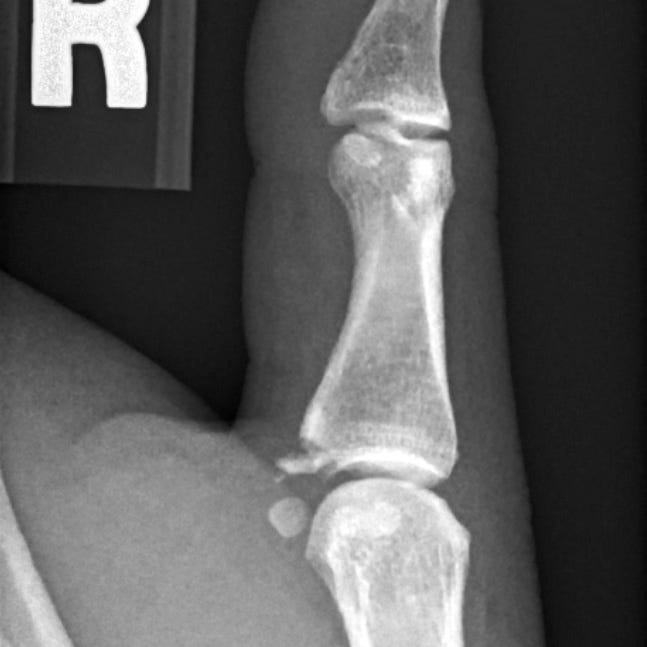
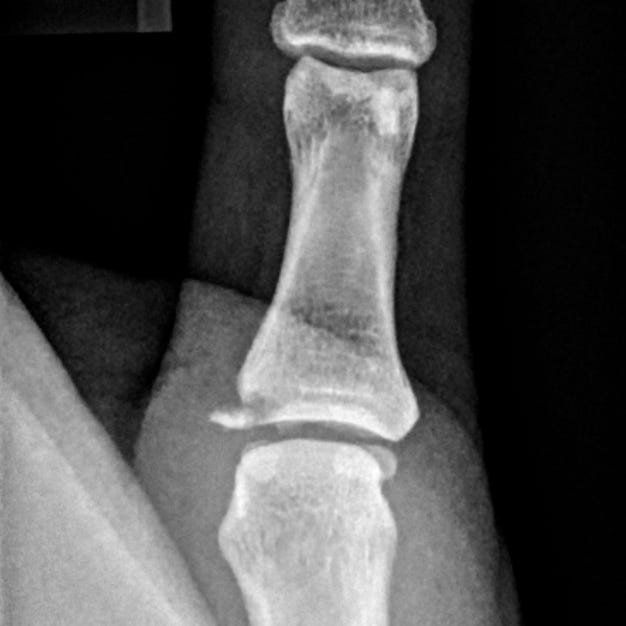
Minimally displaced avulsion of the ulnar base of the first proximal phalanx (oblique and PA radiographs).
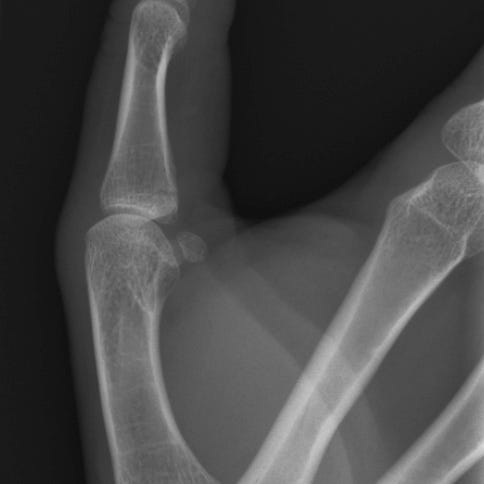

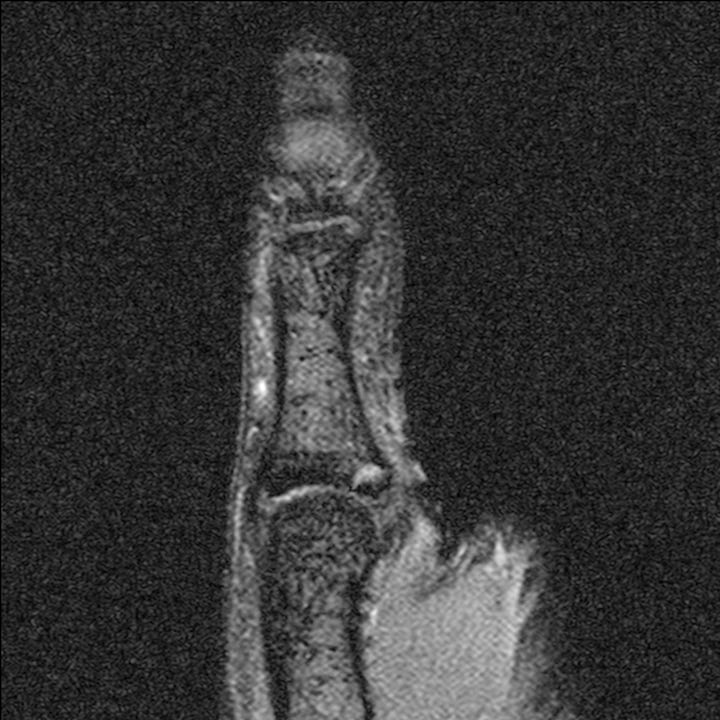
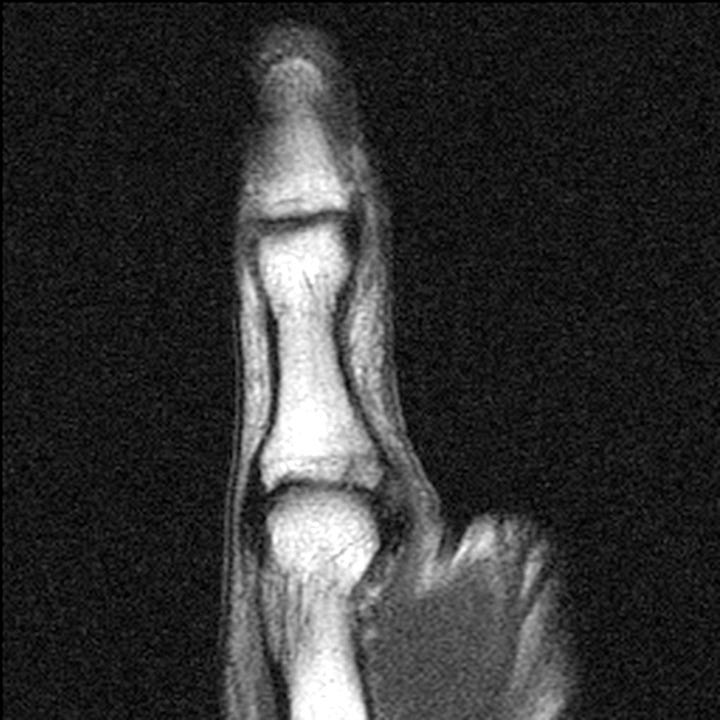
Nondisplaced avulsion of the ulnar base of the first proximal phalanx, nearly invisible on oblique radiograph. STIR MRI shows increased signal at the avulsion site. T1-weighted image shows the radial and ulnar collateral ligaments at the first carpometacarpal joint.
Ultrasound and MRI can be used to identify a Stener lesion, in which the avulsed ligament is displaced below the adductor pollicis aponeurosis. This is present in most complete tears, prevents normal healing, and normally requires surgical management.
Immobilization is the primary initial treatment for nondisplaced avulsion fractures and ligament strains without major instability; a thumb spica cast or splint should be placed for 6 weeks. Surgery is usually indicated for ligamentous injuries with significant thumb instability and for displaced fractures.



